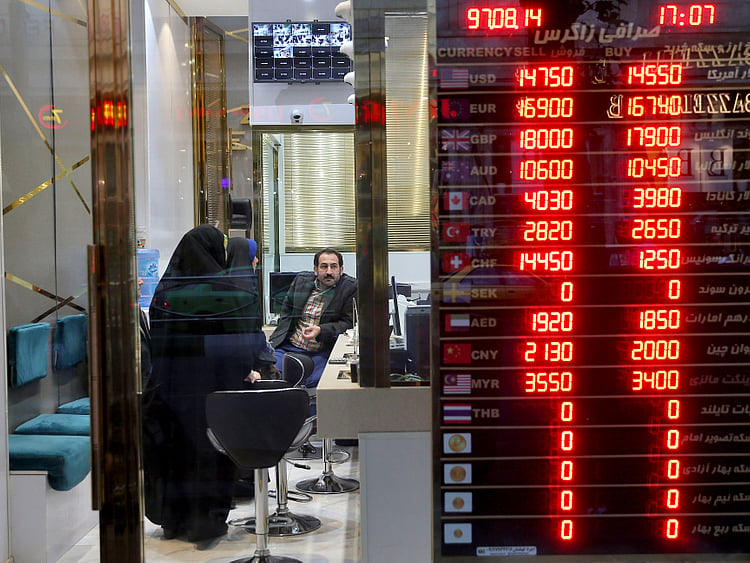After a bold, but premature, declaration this time last year to afflict maximum economic pain on Iran, US President Donald Trump is delivering on his promise and tightening the vice on a country that seemed full of promise after the signing of the 2015 nuclear agreement. It has been an aggressive three-stage affair, targeting oil exports, the financial sector and, this past week, the country’s industrial metals industry.
President Hassan Rouhani advised Iranians to fasten their seatbelts and prepare to resist “unprecedented pressure” matching the sanctions imposed during the eight year Iran-Iraq war back in the 1980s. They are a resilient population, a trait I witnessed first-hand while on assignment in the country.
From the grand bazaar in Tehran to the oil fields in Azadegan in the country’s southwest, traders and energy field managers told me decades of on-again, off-again sanctions taught them how to survive. While basking under the halo of the nuclear agreement, Iran’s oil exports surged to 3 million barrels a day in the autumn of 2016.
According to the Energy Information Administration in the US, that dropped to just 1.1 million barrels in March. Using a conservative estimate of $50 a barrel, the sanctions are already costing Iran about $35 billion a year in lost oil revenues alone. The question remains, can the Trump administration take that down to zero exports this year.
“I don’t think so,” said Emmanuel Ibe Kachikwu, Nigeria’s Petroleum Minister during an interview in Dubai. “That is what they have, so they are going to sell somehow.”
Kachikwu, the newest member of the Joint Ministerial Monitoring Committee in the OPEC+ apparatus bringing together 24 members to rebalance oil markets, said there are countries sympathetic with Iran’s position and therefore will continue to purchase its crude. Of Iran’s top five customers, Japan, South Korea and India quickly cut back their orders; while China and Turkey, representing over 800 thousand barrels of daily demand, have remained steadfast so far in the face of the US pressure.
The full weight of the US sanctions is in a word heavy, regardless of limited support from Iran’s allies. The International Monetary Fund’s regional economic outlook estimates Iran will contract by 6 per cent in 2019, the second year in a row of recession. That calculation however was done before the Trump administration lifted its waivers for oil exports.
“Look, the risks are on the down side because production will go further down. This will have a more negative impact, of course,” said Jihad Azour, regional director of the IMF.
While the spotlight remains on Iran’s oil and gas exports, the desire by Washington to target industrial metals will hit family trading groups and deepen widespread unemployment of 12 per cent, double that amongst its youth. Iran ranks 15th in the world in terms of auto manufacturing and in the Top 10 of global steel producers.
Then there is the impact of financial sanctions, which pushed the Iranian rial to a seven-month low, with inflation projected to hit 40 per cent before the end of the year according to the IMF. As Rouhani suggested in his economic call to arms, “giving in is not consistent with our culture… thus we should not accept submission and we should try to find a solution.”
It is difficult at this stage to imagine what that solution might involve.
A day after the US President said he would like Iranian leaders to “call me”, a top commander from Iran’s Revolutionary Guard Corps rejected that option outright, even as the US carrier Abraham Lincoln was deployed to the Middle East as a warning to Iran, along with a full array of military hardware.
In between the post-Cold War era and before the full rise of China, the US is behaving like the last bully on the block, with superior military capabilities, a $20 trillion economy and control of the world’s reserve currency.
That hardline approach is coupled with a bold play to support ExxonMobil’s $53 billion proposed oil and gas deal in southern Iraq, that could ultimately be worth about ten times that amount to the government over the next 30 years. It is an aggressive call that seems consistent with the playbook of President Trump’s National Security Advisor John Bolton.
He never liked the nuclear deal signed by his boss’s predecessor, has been empowered to do something about it and putting a wedge between Iran and Iraq looks to be part of that strategy.
After covering this region for the past 30 years, one begins to feel they have read this script before and it may not conclude with a quiet ending.
John Defterios is Emerging Markets Editor at CNNMoney.
Sign up for the Daily Briefing
Get the latest news and updates straight to your inbox
Network Links
GN StoreDownload our app
© Al Nisr Publishing LLC 2025. All rights reserved.
